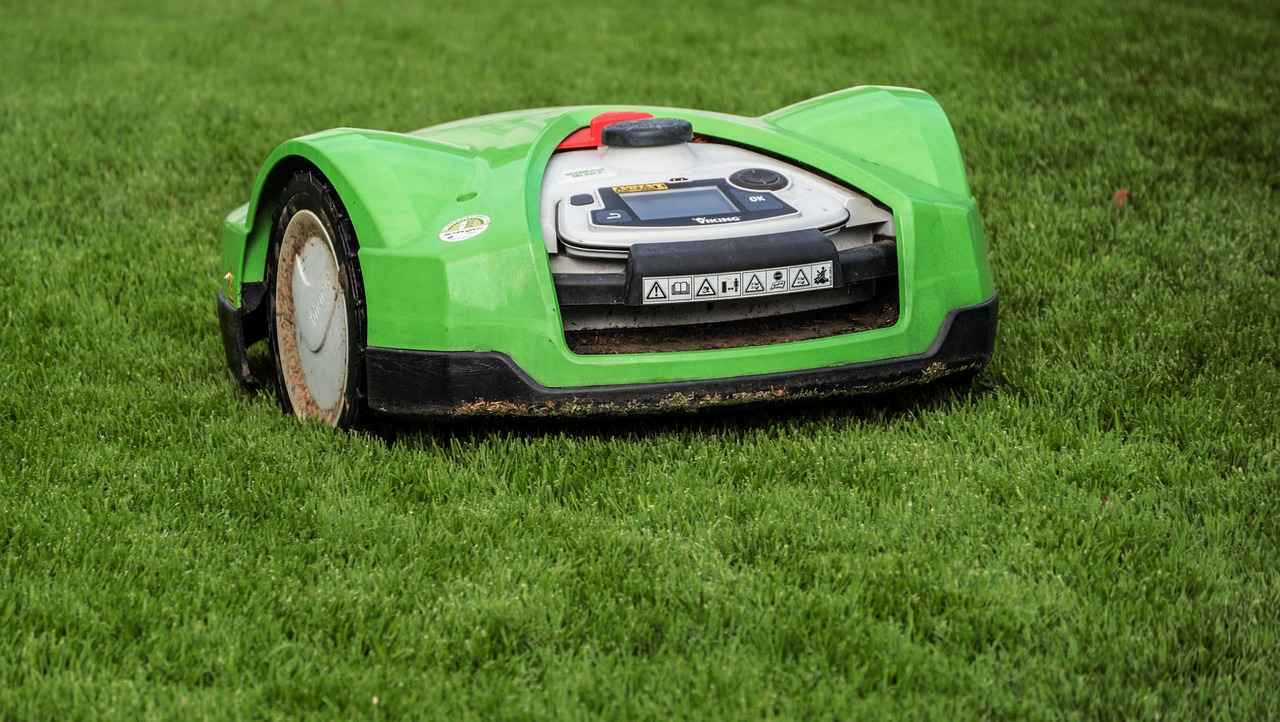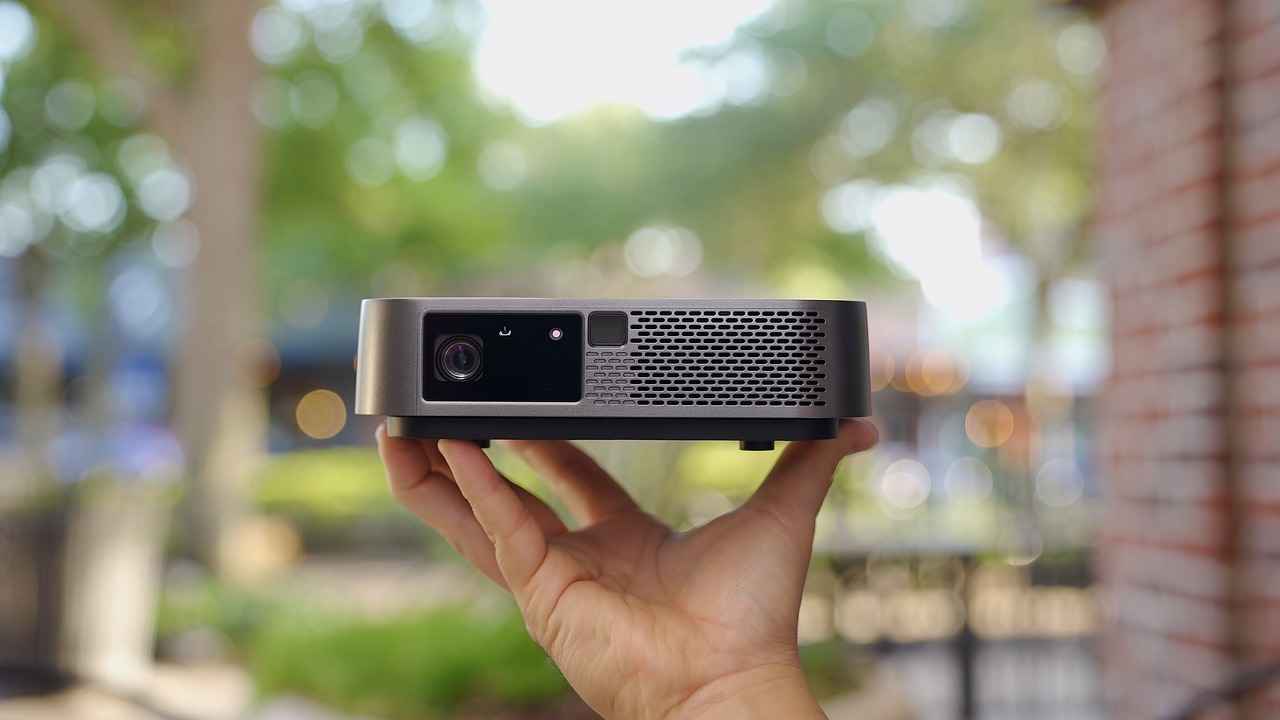This article delves into a variety of smart home devices that significantly enhance the convenience, security, and energy efficiency of your living space. By exploring their features and benefits, we aim to provide insights into how these devices seamlessly integrate into your daily life.
What Are Smart Home Devices?
Smart home devices are internet-connected gadgets that empower users to control various aspects of their home environment remotely. These devices not only enhance convenience but also improve energy efficiency and provide heightened security.
Benefits of Smart Home Technology
- Increased Convenience: Smart devices simplify daily tasks, allowing for remote management.
- Improved Energy Efficiency: Many devices are designed to optimize energy consumption.
- Enhanced Security: Smart security systems provide real-time monitoring and alerts.
- Task Automation: Automating routines streamlines household responsibilities.
Popular Smart Home Devices to Consider
| Device | Feature | Benefit |
|---|---|---|
| Smart Thermostats | Learn user preferences | Reduce energy bills |
| Smart Security Cameras | Real-time alerts | Enhanced property security |
| Smart Lighting | Remote control of brightness and color | Energy savings and ambiance |
Integrating Smart Devices into Your Home
To effectively integrate smart devices, it’s essential to choose a compatible ecosystem such as Amazon Alexa, Google Home, or Apple HomeKit. Proper installation and setup are crucial to maximize functionality and ensure seamless communication between devices.
Future Trends in Smart Home Technology
The future of smart home technology looks bright, with advancements in artificial intelligence and IoT set to revolutionize our interactions with living spaces. Expect to see enhanced automation capabilities and increased interoperability among devices from different brands, simplifying the user experience.
In conclusion, embracing smart home technology not only makes your home more efficient and secure but also enriches your daily life with convenience and automation. As these technologies continue to evolve, they promise to transform our living environments in exciting ways.

What Are Smart Home Devices?
Smart home devices have revolutionized the way we interact with our living spaces, transforming our homes into more efficient and secure environments. These internet-connected gadgets allow users to control various aspects of their home remotely, enhancing convenience and energy efficiency while providing greater security. In this article, we will delve into the world of smart home devices, their benefits, and popular options available today.
Smart home devices are electronic devices that connect to the internet, allowing users to monitor and control their home environments from anywhere. This technology encompasses a wide range of products, including smart thermostats, lighting systems, security cameras, and appliances. By integrating these devices into your home, you can automate tasks, improve energy efficiency, and enhance your overall living experience.
- Increased Convenience: Smart devices streamline daily routines by enabling remote control and automation.
- Energy Efficiency: Many smart devices are designed to optimize energy usage, reducing utility bills.
- Enhanced Security: Smart security systems provide real-time monitoring and alerts, keeping your home safe.
- Automation: Devices can be programmed to operate on schedules or respond to voice commands, simplifying household management.
Among the most sought-after smart home devices are:
- Smart Thermostats: Devices like the Nest Learning Thermostat adjust heating and cooling based on your preferences, optimizing energy consumption.
- Smart Security Cameras: These cameras provide live feeds and alerts, enabling homeowners to monitor their property remotely.
- Smart Lighting: Systems that allow you to control brightness and color settings from your smartphone or voice assistant.
To successfully integrate smart devices, consider the following:
- Choosing the Right Ecosystem: Ensure compatibility with platforms like Amazon Alexa, Google Home, or Apple HomeKit.
- Installation and Setup: Follow guidelines for proper installation to maximize functionality and connectivity.
In conclusion, smart home devices not only enhance convenience and security but also promote energy efficiency, making them a valuable addition to any modern home. As technology continues to evolve, the integration of smart devices will only become more seamless, providing users with enhanced control over their living environments.

Benefits of Smart Home Technology
Smart home technology is revolutionizing the way we interact with our living spaces, offering a wide array of benefits that cater to modern lifestyles. By integrating various devices into a cohesive system, homeowners can enjoy a multitude of advantages that enhance convenience, security, and energy efficiency.
- Increased Convenience: Smart home devices allow users to control various aspects of their home from anywhere, whether it’s adjusting the thermostat or turning off lights. This level of control makes everyday tasks simpler and more efficient.
- Improved Energy Efficiency: Many smart devices are designed to optimize energy consumption. For instance, smart thermostats can learn your schedule and adjust heating and cooling accordingly, leading to significant savings on utility bills.
- Enhanced Security: Smart security systems, including cameras and alarms, provide real-time monitoring and alerts. Homeowners can keep an eye on their property from their smartphones, ensuring peace of mind even when they are away.
- Automation of Daily Tasks: With smart home technology, routine tasks can be automated. For example, smart lighting can be programmed to turn on and off at specific times, creating a seamless living experience.
Moreover, the integration of voice-controlled assistants simplifies interactions with smart devices. Users can issue commands or ask questions hands-free, making home management more accessible than ever before.
In conclusion, the advantages of smart home technology extend far beyond mere convenience. By improving energy efficiency, enhancing security, and automating daily tasks, these innovations contribute to a more streamlined and enjoyable lifestyle. As technology continues to evolve, the potential for smart homes to transform our living environments grows even more promising.
Convenience and Automation
In today’s fast-paced world, the integration of technology into our daily lives has become essential. Automation plays a pivotal role in simplifying everyday tasks, allowing devices to operate based on predetermined schedules or through intuitive voice commands. This innovation not only enhances convenience but also transforms how we manage our household responsibilities.
Imagine waking up in the morning and having your coffee maker start brewing your favorite blend automatically, or your lights gradually brightening to mimic a natural sunrise. These scenarios are made possible through smart home devices that prioritize user convenience. By automating repetitive tasks, individuals can focus on more important aspects of their lives, reducing stress and saving valuable time.
One of the most significant advantages of automation is its ability to create a seamless home environment. For instance, smart thermostats can learn your daily routines, adjusting the temperature to your preference before you even arrive home. Similarly, smart lighting systems can be programmed to turn on or off at specific times, ensuring that you never walk into a dark house again.
Moreover, voice-controlled assistants such as Amazon Alexa and Google Assistant take convenience a step further by enabling hands-free control of your smart devices. With simple voice commands, you can adjust the thermostat, turn on the lights, or even check the status of your security system without lifting a finger.
The integration of automation into daily life not only enhances convenience but also promotes energy efficiency. By scheduling devices to operate during off-peak hours or optimizing energy consumption based on usage patterns, households can significantly reduce their energy bills while contributing to a more sustainable environment.
In conclusion, the convenience and automation offered by smart home technology have revolutionized how we manage our daily tasks. By allowing devices to operate autonomously, we can enjoy a more comfortable and efficient living space, ultimately leading to a higher quality of life.
Voice-Controlled Assistants
have revolutionized the way we interact with technology in our homes. Devices such as Amazon Alexa and Google Assistant not only provide hands-free management of smart devices but also enhance the overall convenience of managing daily tasks. With just a simple voice command, users can control various aspects of their home environment, from adjusting the thermostat to turning on lights.
These assistants serve as a central hub, integrating with a multitude of smart devices. This integration allows for a seamless experience where users can create routines that automate multiple actions at once. For example, saying “Good night” could turn off all lights, lock doors, and lower the thermostat, providing a sense of security and comfort.
Moreover, voice-controlled assistants are equipped with advanced AI technology that learns user preferences over time. This means they can anticipate needs and offer suggestions, making home management even more intuitive. For instance, if you frequently ask for the morning news while brewing coffee, the assistant may begin to provide updates automatically during that time.
In addition to convenience, these devices also contribute to energy efficiency. By controlling smart thermostats and lighting systems, users can optimize their energy consumption, potentially leading to lower utility bills. Many voice-controlled assistants also offer insights into energy usage patterns, helping homeowners make informed decisions about their consumption.
As technology continues to evolve, the capabilities of voice-controlled assistants are expected to expand further. Future developments may include enhanced interoperability with an even wider range of devices, allowing for a more cohesive smart home experience.
In conclusion, voice-controlled assistants like Amazon Alexa and Google Assistant are not just about convenience; they represent a significant leap towards a more connected and efficient home. With their ability to manage various smart devices through voice commands, they enhance our daily lives, making home management simpler and more efficient.
Smart Lighting Solutions
have revolutionized the way we interact with our home environments. These innovative systems allow users to control lighting with remarkable flexibility, making it easier than ever to create the perfect atmosphere for any occasion. From cozy evenings to vibrant gatherings, smart lighting can adapt to your needs.
One of the key features of smart lighting is the ability to adjust brightness and color remotely. Using a smartphone app or voice commands, users can easily change the lighting to suit their mood or activity. For instance, you can dim the lights for a movie night or switch to bright, energizing colors for a lively party.
- Remote Control: Manage your lights from anywhere, whether you’re at home or away.
- Customizable Schedules: Set timers for your lights to turn on or off automatically, enhancing security and energy efficiency.
- Energy Savings: Smart lighting systems often come with energy-efficient LED bulbs, which consume less power than traditional lighting.
Moreover, many smart lighting solutions integrate seamlessly with other smart home devices, allowing for a cohesive ecosystem. For example, you can program your lights to turn on when your smart security system detects motion, providing an added layer of security.
In addition to functionality, smart lighting enhances the ambiance of your home. You can create personalized lighting experiences that reflect your style and preferences. Whether you prefer soft, warm tones for relaxation or bright, cool tones for focus, the possibilities are virtually endless.
As technology continues to advance, the future of smart lighting looks bright. With features such as voice control, automation, and integration with smart home systems, these solutions not only enhance your living space but also contribute to a more energy-efficient lifestyle.
In conclusion, investing in can significantly enhance your home environment, providing convenience, energy savings, and a personalized touch that transforms ordinary spaces into extraordinary ones.
Energy Efficiency and Cost Savings
are two of the most compelling reasons why homeowners are increasingly turning to smart home technology. By utilizing a range of innovative devices, households can significantly reduce their energy consumption, leading to lower utility bills and a smaller carbon footprint.
Smart home devices such as smart thermostats, smart lighting systems, and energy monitoring tools are at the forefront of this movement. These gadgets not only provide convenience but also play a crucial role in managing energy use effectively. Here’s how they contribute to both cost savings and environmental sustainability:
- Smart Thermostats: Devices like the Nest Learning Thermostat adapt to your schedule and preferences, optimizing heating and cooling cycles. This means your home is only heated or cooled when necessary, resulting in substantial energy savings.
- Smart Lighting: With features that allow you to schedule lights to turn off when not in use or adjust their brightness based on natural light, smart lighting systems can significantly reduce electricity consumption.
- Energy Monitoring Systems: These devices provide real-time data on your energy usage, allowing you to identify areas where you can cut back. By understanding your consumption patterns, you can make informed decisions that lead to further savings.
Moreover, many smart devices are equipped with energy-saving modes that automatically adjust settings to minimize power use. For instance, smart plugs can turn off appliances when they are not in active use, preventing energy waste.
In addition to financial benefits, reducing energy consumption has a positive impact on the environment. By lowering your household’s energy demand, you contribute to a decrease in greenhouse gas emissions associated with energy production. This dual benefit of cost savings and environmental responsibility makes smart home technology an attractive option for modern households.
In conclusion, investing in smart home devices not only enhances your living experience but also fosters a sustainable lifestyle. By embracing technology that prioritizes energy efficiency, you can enjoy significant cost savings while making a positive impact on the planet.

Popular Smart Home Devices to Consider
In today’s fast-paced world, smart home devices have become essential for enhancing convenience and efficiency in our daily lives. With a variety of options available, it’s important to explore which devices can best suit your needs and preferences. Below are some of the most popular smart home devices that can significantly improve your home automation experience.
- Smart Thermostats: Devices like the Nest Learning Thermostat adapt to your heating and cooling habits, optimizing energy usage and helping you save on utility bills. They can be controlled remotely via smartphone apps, allowing you to adjust temperatures from anywhere.
- Smart Security Cameras: Brands such as Ring and Arlo offer smart security cameras that provide real-time monitoring and alerts. These devices enhance your home’s security by allowing you to keep an eye on your property, receive notifications of suspicious activities, and even communicate through the camera.
- Smart Lighting Solutions: Smart bulbs from Philips Hue or LIFX allow you to control the brightness and color of your lights remotely. You can set schedules, create scenes for different occasions, and even control them with voice commands for added convenience.
- Smart Plugs: These devices enable you to control any appliance plugged into them via your smartphone. You can schedule when devices turn on or off, monitor energy usage, and even control them with voice commands through your smart assistant.
- Voice-Controlled Assistants: Devices like Amazon Echo or Google Nest Hub serve as central hubs for managing your smart home. They allow you to control other smart devices, play music, set reminders, and even provide weather updates, all through simple voice commands.
Integrating these smart home devices into your daily routine can lead to a more efficient, secure, and convenient living environment. As technology continues to evolve, staying informed about the latest devices and their capabilities will ensure you make the most out of your smart home experience.
Smart Thermostats
have revolutionized the way we manage our home heating and cooling systems. Devices like the Nest Learning Thermostat not only provide comfort but also significantly enhance energy efficiency. By learning your daily routines and temperature preferences, these smart devices adjust automatically, ensuring that your home is always at the perfect temperature when you need it.
One of the primary benefits of smart thermostats is their ability to optimize energy consumption. They track your usage patterns and can suggest temperature settings that can lead to reduced energy bills. For instance, if you leave home for work every day at 8 AM, a smart thermostat can lower the heating or cooling during that time and start warming or cooling your home just before you return. This level of automation not only provides convenience but also contributes to significant cost savings.
Moreover, many smart thermostats come equipped with features such as geofencing, which uses your smartphone’s location to determine whether you are home or away. This means your thermostat can automatically adjust settings based on your proximity, further enhancing efficiency. Additionally, some models offer energy usage reports that give insights into your consumption, helping you make informed decisions about energy use.
Installation of smart thermostats is typically straightforward, often requiring just a few basic tools. Many brands provide step-by-step guides or smartphone apps to assist with the setup. Once installed, these devices can be controlled via mobile apps, allowing you to adjust your home’s temperature from anywhere, whether you’re at work or on vacation.
In conclusion, smart thermostats like the Nest Learning Thermostat are an excellent investment for any homeowner looking to enhance comfort while reducing energy costs. Their ability to learn and adapt to your lifestyle not only simplifies your daily routine but also supports a more sustainable approach to energy consumption.
Smart Security Cameras
have revolutionized the way homeowners monitor their properties, providing an effective solution for enhancing security. These devices offer real-time monitoring and instant alerts, allowing users to keep a close watch on their homes from virtually anywhere.
Equipped with advanced features such as motion detection, night vision, and two-way audio, smart security cameras ensure comprehensive surveillance. Homeowners can receive notifications on their smartphones whenever suspicious activity is detected, enabling them to respond swiftly to potential threats.
- Remote Access: With the help of mobile applications, users can access live feeds from their cameras at any time, providing peace of mind while away from home.
- Cloud Storage: Many smart cameras offer cloud storage options, allowing users to save video footage securely for future reference.
- Integration with Other Devices: These cameras can be integrated with other smart home devices, such as alarms and smart locks, creating a cohesive security system that enhances overall safety.
Moreover, the installation process for smart security cameras is typically straightforward. Most devices come with user-friendly manuals and apps that guide homeowners through setup. Additionally, many brands offer options for both indoor and outdoor use, catering to various security needs.
In conclusion, investing in is a proactive step towards safeguarding your home. Their ability to provide real-time alerts and remote monitoring not only enhances security but also offers homeowners a sense of control and safety. As technology continues to advance, these devices will likely become even more sophisticated, further improving their effectiveness in protecting our homes.

Integrating Smart Devices into Your Home
can transform your living space into a highly efficient and convenient environment. However, achieving a seamless integration requires careful planning and consideration of various factors to ensure compatibility and optimal performance within your existing infrastructure.
When considering the integration of smart devices, it is essential to first evaluate your home network. A robust Wi-Fi connection is crucial, as many smart devices rely on internet connectivity for functionality. Upgrading your router or adding a mesh network can significantly enhance your connectivity, ensuring that all devices operate smoothly without interruptions.
Next, it’s important to choose a compatible ecosystem. Popular platforms like Amazon Alexa, Google Home, and Apple HomeKit offer different features and capabilities. Selecting a single ecosystem for your devices can simplify control and enhance interoperability. For instance, devices from different manufacturers may work better when they are all compatible with the same smart home hub.
Moreover, device compatibility should be a primary consideration. Before purchasing a smart device, check if it can integrate with your existing systems and other devices. This ensures that you can control everything from a single app or interface, making your experience more user-friendly.
Additionally, pay attention to the installation process. Proper setup is crucial for maximizing the functionality of your smart devices. Some devices may require specific configurations, such as enabling certain features on your router or downloading companion apps. Following the manufacturer’s instructions can help avoid potential issues and ensure that your devices work as intended.
In conclusion, integrating smart devices into your home offers numerous benefits, including enhanced convenience, improved energy efficiency, and increased security. By focusing on network strength, ecosystem compatibility, and proper installation, you can create a cohesive smart home environment that operates smoothly and efficiently.
Choosing the Right Ecosystem
for your smart home setup is a pivotal decision that can significantly influence the performance and compatibility of your devices. With numerous options available, including Amazon Alexa, Google Home, and Apple HomeKit, it’s essential to understand how each ecosystem operates and which one aligns best with your needs.
Each ecosystem offers unique features and integrations that can enhance your smart home experience. For instance, Amazon Alexa is renowned for its extensive compatibility with a wide range of devices, making it a versatile choice for users looking to create a comprehensive smart home. On the other hand, Google Home excels in providing a seamless integration with Google services, allowing for intuitive voice commands and smart assistant functionalities.
Apple HomeKit, while slightly more restrictive in terms of device compatibility, offers robust security features and a user-friendly interface, making it a preferred choice for Apple enthusiasts. The choice of ecosystem will not only affect how well your devices communicate but also determine the ease of use and the level of automation you can achieve.
- Compatibility: Ensure that your chosen ecosystem supports all the devices you plan to use.
- Voice Assistant Features: Consider the voice recognition capabilities and the range of commands available.
- Security: Look for ecosystems that prioritize user data protection and offer robust encryption.
- Future-Proofing: Choose a system that is likely to evolve with emerging technologies and new devices.
In conclusion, selecting the right ecosystem is crucial for maximizing the potential of your smart home devices. By carefully considering compatibility, features, and security measures, you can create a cohesive and efficient smart home environment that meets your lifestyle needs.
Installation and Setup Tips
Proper installation and setup are crucial for maximizing the functionality of your smart home devices. A seamless experience often hinges on a few key factors, primarily network connectivity and device compatibility. Here are some essential tips to ensure your smart devices operate at their best:
- Check Your Wi-Fi Network: Before installing any smart device, ensure that your Wi-Fi network is robust and reliable. A strong signal is necessary for devices to communicate effectively. Consider using a Wi-Fi extender if your router is far from the device location.
- Device Compatibility: Not all smart devices work with every ecosystem. Research and confirm that your chosen devices are compatible with your existing smart home ecosystem, whether it’s Amazon Alexa, Google Home, or Apple HomeKit.
- Follow Manufacturer Instructions: Each device comes with specific installation guidelines. Adhering to these instructions will help avoid common pitfalls and ensure proper setup. Don’t skip any steps, especially those related to firmware updates.
- Secure Your Network: Security is paramount in a smart home. Use strong, unique passwords for your Wi-Fi and smart devices. Consider enabling two-factor authentication where possible to add an extra layer of security.
- Test Device Functionality: After installation, thoroughly test each device to ensure it operates as expected. This includes checking remote access, voice commands, and any automation features.
- Regular Maintenance: Keep your smart devices updated with the latest software to enhance performance and security. Regularly check for updates and apply them as needed to avoid vulnerabilities.
By following these installation and setup tips, you can enhance the functionality and longevity of your smart home devices, ensuring a more efficient and enjoyable smart home experience.

Future Trends in Smart Home Technology
The future of smart home technology is not just bright; it is set to transform the way we live, interact, and manage our homes. With rapid advancements in artificial intelligence, machine learning, and the Internet of Things (IoT), the integration of smart devices into our daily lives is becoming increasingly seamless and intuitive.
As we look ahead, several key trends are emerging that will shape the landscape of smart home technology:
- AI-Driven Personalization: Future smart home systems will leverage AI to learn user habits and preferences, creating a highly personalized living environment. For instance, smart thermostats will not only adjust temperatures based on previous settings but will also anticipate user needs based on time of day and occupancy.
- Enhanced Interconnectivity: The next generation of smart devices will feature improved interoperability, allowing devices from different manufacturers to work together more effectively. This will simplify user experiences and create a more cohesive smart home ecosystem.
- Energy Management Solutions: Smart home technology will increasingly focus on energy efficiency, with devices capable of monitoring and optimizing energy use in real-time. Homeowners will benefit from lower utility bills and a reduced carbon footprint, thanks to intelligent energy management systems.
- Advanced Security Features: Security will remain a top priority, with smart home devices incorporating sophisticated features such as facial recognition, motion detection, and real-time alerts to enhance home safety.
- Voice and Gesture Control: As voice recognition technology becomes more sophisticated, users will be able to control their smart home devices through natural language commands and even gestures, making interactions more intuitive and user-friendly.
In conclusion, the future of smart home technology is poised for remarkable growth and innovation. As AI, machine learning, and IoT continue to evolve, we can expect our homes to become smarter, safer, and more efficient, fundamentally changing the way we live and interact with our environments.
AI-Powered Home Automation
In recent years, has emerged as a transformative force in the realm of smart home technology. These advanced systems leverage artificial intelligence to significantly enhance the automation capabilities of various devices within our homes. By learning user preferences and adapting to changing needs, AI-driven solutions provide a more personalized and efficient living experience.
One of the most compelling advantages of AI in home automation is its ability to analyze user behavior. For instance, smart thermostats equipped with AI can learn your heating and cooling preferences over time, adjusting settings automatically to ensure optimal comfort while maximizing energy efficiency. This not only leads to significant savings on utility bills but also reduces the environmental impact of excessive energy consumption.
Moreover, AI-powered systems can integrate seamlessly with a range of smart devices, creating a cohesive ecosystem that enhances overall convenience. Imagine a scenario where your smart lighting adjusts automatically based on the time of day, or your security cameras send alerts only when unusual activity is detected. These intelligent responses not only improve user experience but also enhance home security.
Additionally, AI technology can facilitate predictive maintenance for devices, alerting homeowners to potential issues before they escalate into costly repairs. By analyzing usage patterns and performance metrics, these systems can notify users when it’s time to replace filters in HVAC systems or when appliances require servicing.
As we look to the future, the integration of AI in home automation will likely continue to evolve. With advancements in machine learning and data analytics, we can expect even greater personalization and adaptability in our smart home systems. This shift towards a more intuitive and responsive home environment promises to redefine how we interact with our living spaces.
In conclusion, AI-powered home automation is not just about convenience; it’s about creating a smarter, more efficient, and personalized living experience. As technology continues to advance, the possibilities for enhancing our homes through intelligent automation are virtually limitless.
Increased Interoperability
is set to transform the landscape of smart home technology, offering users a seamless experience that bridges various brands and platforms. As the demand for smarter living spaces grows, manufacturers are focusing on enhancing compatibility among devices, which will significantly simplify user interactions.
Traditionally, smart devices operated within their own ecosystems, limiting their functionality and requiring users to manage multiple apps and interfaces. However, the future promises a shift towards universal connectivity. This means that devices from different manufacturers will be able to communicate and work together efficiently, allowing users to control their entire home environment from a single interface.
One of the most exciting prospects of increased interoperability is the potential for customized automation. For instance, imagine a scenario where your smart thermostat adjusts the temperature based on data from your smart security system, which detects that you’re home. Such integrations will not only enhance convenience but also improve energy efficiency, as devices will work together to optimize resource use.
Moreover, with the rise of open-source platforms, developers are encouraged to create applications that can interact with a wide range of devices. This will lead to the emergence of innovative solutions that can cater to specific user needs, further enhancing the smart home experience.
As we move forward, it’s crucial for consumers to stay informed about the devices they choose. Opting for products that support common standards, such as Matter or Zigbee, will ensure that your smart home remains adaptable and future-proof. This approach not only enhances compatibility but also protects your investment in smart technology.
In conclusion, the future of smart home devices lies in their ability to interoperate seamlessly. This evolution will not only simplify user experiences but also enhance the overall functionality of smart homes, making them more intuitive and responsive to our needs.
Frequently Asked Questions
- What are the benefits of using smart home devices?
Smart home devices offer a range of benefits, including enhanced convenience, improved energy efficiency, and increased security. They allow you to automate daily tasks, control your home environment remotely, and save on utility bills.
- How do I choose the right smart home ecosystem?
Selecting the right ecosystem, such as Amazon Alexa, Google Home, or Apple HomeKit, is crucial. Consider compatibility with your devices and the features you need to ensure seamless integration and optimal performance.
- Are smart home devices easy to install?
Many smart home devices are designed for easy installation, often requiring just a few steps. However, some may need careful attention to network connectivity and compatibility, so always check the setup instructions provided.
- Can I control smart home devices with my voice?
Absolutely! Voice-controlled assistants like Amazon Alexa and Google Assistant make it super easy to manage your smart devices hands-free. Just speak your command, and watch your home respond!
- What is the future of smart home technology?
The future looks bright with advancements in AI and IoT. Expect smarter automation, better interoperability between devices, and an even more personalized home experience tailored to your preferences.














